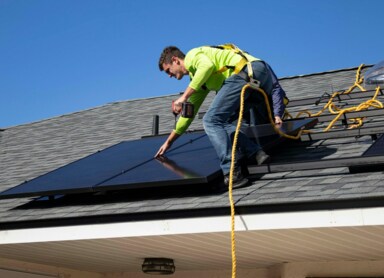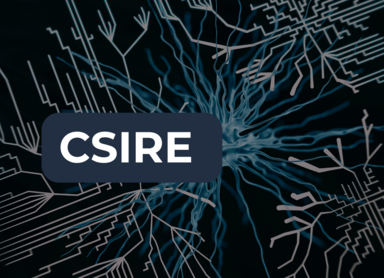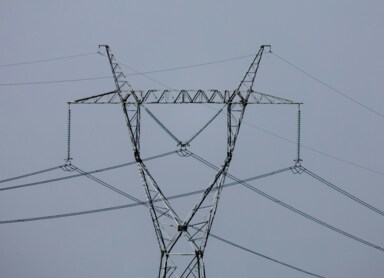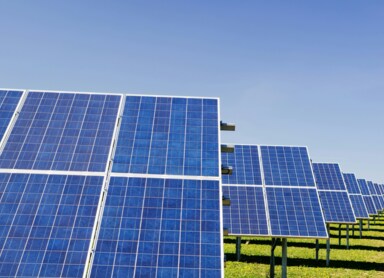Three-phase electricity – is it a more eco-friendly solution for households and businesses?
Access to electricity is necessary to use any device, whether it’s a kettle or an industrial machine. At the stage of designing a building’s electrical installation, it becomes necessary to choose between a single-phase and a three-phase system. How do they differ from each other? And is three-phase electricity more eco-friendly?
Three-phase electricity – what is it and how does it work?
In a single-phase installation, one wire is used to transmit electrical energy. Such an installation is simple to design and relatively inexpensive compared to a three-phase system, but it also has its limitations. It is not suitable for heavy energy loads.
Unlike a single-phase installation, a three-phase one consists of five wires – or four when there is no protective conductor. These are:
-
Phase wires L1, L2, and L3
-
Neutral wire N
-
Protective wire PE
The use of three wires to transmit energy makes it possible to handle significantly higher loads and increases transmission stability. That is why three-phase systems are usually installed in factories, where entire machine parks or production lines are connected. They can also be designed for single-family homes. A good example is EV chargers. Single-phase chargers can always be connected to the grid, but they charge cars slowly. In contrast, three-phase chargers do this much faster. If your electric car has a large-capacity battery, it is definitely better to charge it with a three-phase system rather than a single-phase one.
Single-phase vs. three-phase electricity – key differences
A single-phase system is characterized by a single phase, which means the voltage alternates periodically between positive and negative. It uses two wires – a brown or black phase wire and a blue neutral wire. The voltage in such a system is 230 V, which is sufficient to power, for example:
- household appliances and electronics,
- lighting,
- small industrial machines.
In the case of three-phase power, there are three phases shifted relative to one another, and this shift is constant. When one phase reaches its maximum, the other two are at their minimum. Thanks to this, electricity in a three-phase system is evenly distributed and can provide power above 6 kW. Three-phase installations are mainly used in production plants, machinery industries, or rail transport. The voltage in a three-phase installation is 230 V or 400 V.
Is three-phase power more expensive than single-phase? Costs and fees
Using three-phase electricity generates additional costs, though they are not drastically higher. One must keep in mind the need to install additional wires, an energy meter, as well as proper fuses, residual current devices, and surge protectors. However, this is a one-time expense.
Installed elements of an electrical system rarely break down and seldom require the assistance of an electrician. If a failure does occur, however, fixing it will be more expensive due to the complexity of the system.
As for transmission fees, a three-phase metering system is slightly more expensive, but the monthly difference in fixed transmission charges usually amounts to just a few units of local currency. So, while three-phase electricity is indeed more expensive, the comfort it provides certainly outweighs the slightly higher electricity bill.
Can you switch from single-phase to three-phase?
Converting a single-phase installation into a three-phase one is possible but involves relatively high costs. It requires designing and filing a project, replacing meters and cables, installing additional safety devices, and sometimes carrying out earthworks. Such work should always be entrusted to a licensed professional. Interfering with an electrical installation on your own is both illegal and, above all, dangerous.
To reduce modification costs, it’s worth planning the system’s structure in advance. This way, investors can avoid expenses and potential downtime in business operations.
Three-phase electricity – voltage and applications
Due to its higher voltage (400 V), three-phase installations are used, among others:
-
in industry and production plants that use machines with heavy loads,
-
in agriculture to power large electrical equipment,
-
in power plants to transmit electricity from generators to consumers,
-
in photovoltaic farms to power generating installations.
Three-phase systems can also be installed in single-family homes. They are especially useful when residents use a heat pump, electric vehicle, or rely heavily on electrical appliances and consumer electronics.
Connecting three-phase electricity – requirements and procedure
Connecting three-phase electricity involves several steps. The first is submitting an application for connection conditions. This document includes, among other things, property details and power demand. Attachments usually include proof of ownership and a building plan or site sketch.
The next step is the construction of the connection and installation of the meter. Wires must be properly labeled, and the system extended according to needs. Although it is easy to find online guides on connecting such systems, the work should always be done by licensed specialists. Mistakes at this stage may damage equipment or, in extreme cases, lead to electric shock.
The final step is signing a contract with an electricity supplier. This is a good moment to choose a provider that offers attractive rates and additional benefits.
How to distribute three-phase electricity? Rules and safety
The distribution of a three-phase installation should be based on individual needs. One strategy is to divide it by rooms. Another is to separate circuits for devices with particularly high power demands.
The main rule is to consider the maximum power consumption of all devices within each circuit. This should be properly compensated with installed safety devices. This way, even occasional overloads will not cause a blackout across the entire building.
Home photovoltaics – single-phase or three-phase installation?
When installing a photovoltaic system, it is important to match it to the home’s power system. Currently, both single-phase and three-phase inverters are available on the market, with the latter needing to be connected to a three-phase electrical circuit. The question is, who actually needs a three-phase inverter?
It is assumed that each kilowatt-peak (1 kWp) of a PV system can generate 800 to 1,000 kWh of electricity annually. Depending on the energy demand of a single-family home, it is rarely necessary to install panels exceeding 5–6 kWp in total capacity.
A single-phase inverter is sufficient for systems up to 3.86 kWp. Above this value, a three-phase system becomes necessary, which may involve modifying the electrical network. For industrial needs, three phases are practically always required. For small home PV installations, however, a single phase may sometimes be enough.
Thinking about using renewable energy technologies to power your home or business?
We can help you plan a green growth strategy. Check out our offer and let’s build your sustainable future together!






